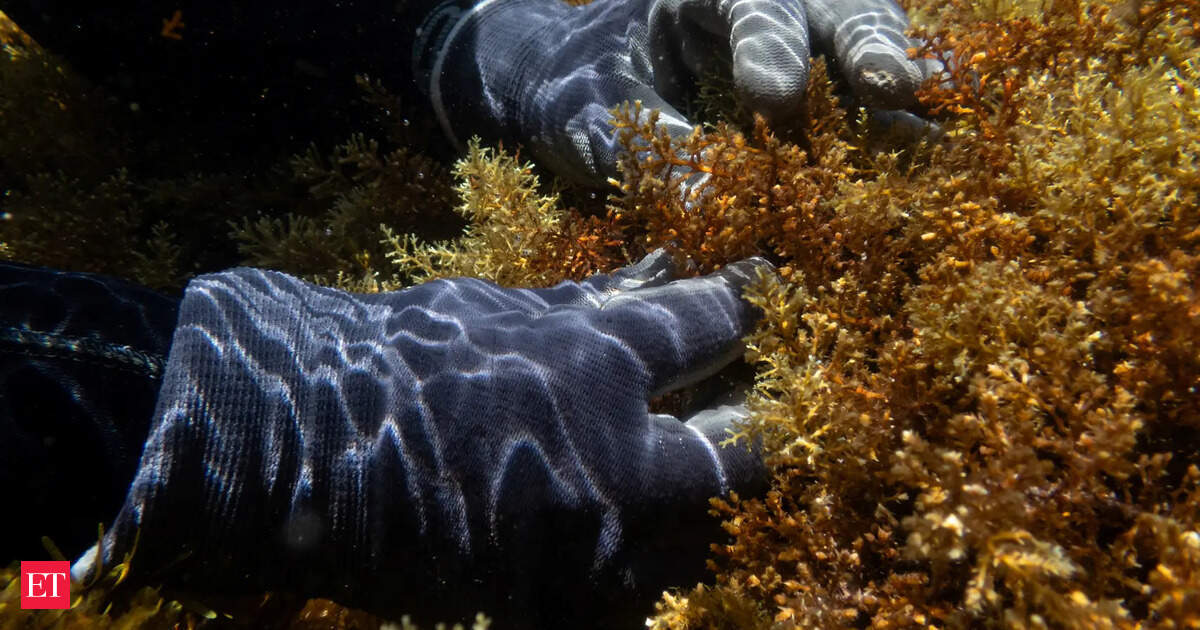ReutersOperation Crayweed
Sydney’s iconic coastline is witnessing a remarkable ecological comeback. Once devastated by pollution, its underwater crayweed forests—vital to marine life and coastal health—are being painstakingly restored through a pioneering project known as Operation Crayweed. This effort not only brings back a lost habitat but also offers a blueprint for global marine restoration.Launched over a decade ago, Operation Crayweed is a collaborative project led by scientists from the University of New South Wales and other institutions, with support from government agencies and community volunteers. The mission: to restore 60 hectares of crayweed forest to Sydney’s shallow rocky reefs.Crayweed (Phyllospora comosa) is a large, golden-brown seaweed that once flourished along the southeastern shores of Australia. These underwater forests are crucial: they sequester carbon, provide shelter and nursery grounds for marine life such as abalone, rock lobsters, and numerous fish species, and underpin coastal biodiversity and food webs.However, during the 1980s, a 70-kilometer stretch of crayweed vanished from Sydney’s reefs, coinciding with the discharge of untreated sewage into the ocean. The loss went largely unnoticed at the time, but its effects rippled through the ecosystem, impacting fisheries, reducing biodiversity, and diminishing the coastline’s natural resilience.How it worksSelection and Planting: Healthy male and female crayweed are collected from natural populations and attached to biodegradable mats, which are anchored to selected reef sites.Natural Reproduction: Male plants release sperm into the water, fertilizing eggs from nearby females. The resulting juveniles, or “craybies,” attach themselves to the reef and begin to grow.Mats Removal: Once the young crayweed are established, the mats are removed, allowing the forest to expand naturally.This approach, known as “applied nucleation,” creates small, self-sustaining patches that act as seed sources for further natural spread.Results and impactSince its inception, Operation Crayweed has targeted 16 sites along Sydney’s reefs. Seven of these now support self-sustaining crayweed forests, spanning more than two hectares. Notably, new sites added in 2024—such as Dee Why and South Maroubra—have shown rapid growth, with South Maroubra alone seeing over 1,500 craybies established by early 2025.Live EventsMicroscopic organisms and other marine life are already returning, signaling the gradual restoration of the broader ecosystem. Biodiversity at restored sites is beginning to resemble that of natural crayweed forests, supporting key fish and shellfish populations and enhancing recreational fishing opportunities.Not all restoration attempts have succeeded. Some sites have struggled due to high levels of herbivory (grazing by marine animals) or burial by sand. The project’s adaptive approach—testing different plot sizes, donor sites, and genetic diversity—has been key to understanding what drives successful restoration.Operation Crayweed is not just about reintroducing a single species; it’s about rebuilding an entire ecosystem and the services it provides. As Dr. Adriana Vergés, co-founder of the project, explains, “We’re not merely reintroducing one species; we’re cultivating an entire ecosystem”.The road aheadWith three new sites added in 2024 and plans for ten more over the next two and a half years, Operation Crayweed is scaling up its efforts. The project has also become a model for public engagement, combining science, community action, and creative outreach to inspire support for marine conservation.(You can now subscribe to our Economic Times WhatsApp channel)
Read More News onOperation CrayweedUniversity of New South WalesSydney underwater forests restorationAustralia crayweed projectunderwater biodiversityaustralianatural reproductionCrayweed (Phyllospora comosa)
(Catch all the Business News, Breaking News, Budget 2025 Events and Latest News Updates on The Economic Times.) Subscribe to The Economic Times Prime and read the ET ePaper online….moreless
(You can now subscribe to our Economic Times WhatsApp channel)Read More News onOperation CrayweedUniversity of New South WalesSydney underwater forests restorationAustralia crayweed projectunderwater biodiversityaustralianatural reproductionCrayweed (Phyllospora comosa)(Catch all the Business News, Breaking News, Budget 2025 Events and Latest News Updates on The Economic Times.) Subscribe to The Economic Times Prime and read the ET ePaper online….moreless
Explore More Stories123
